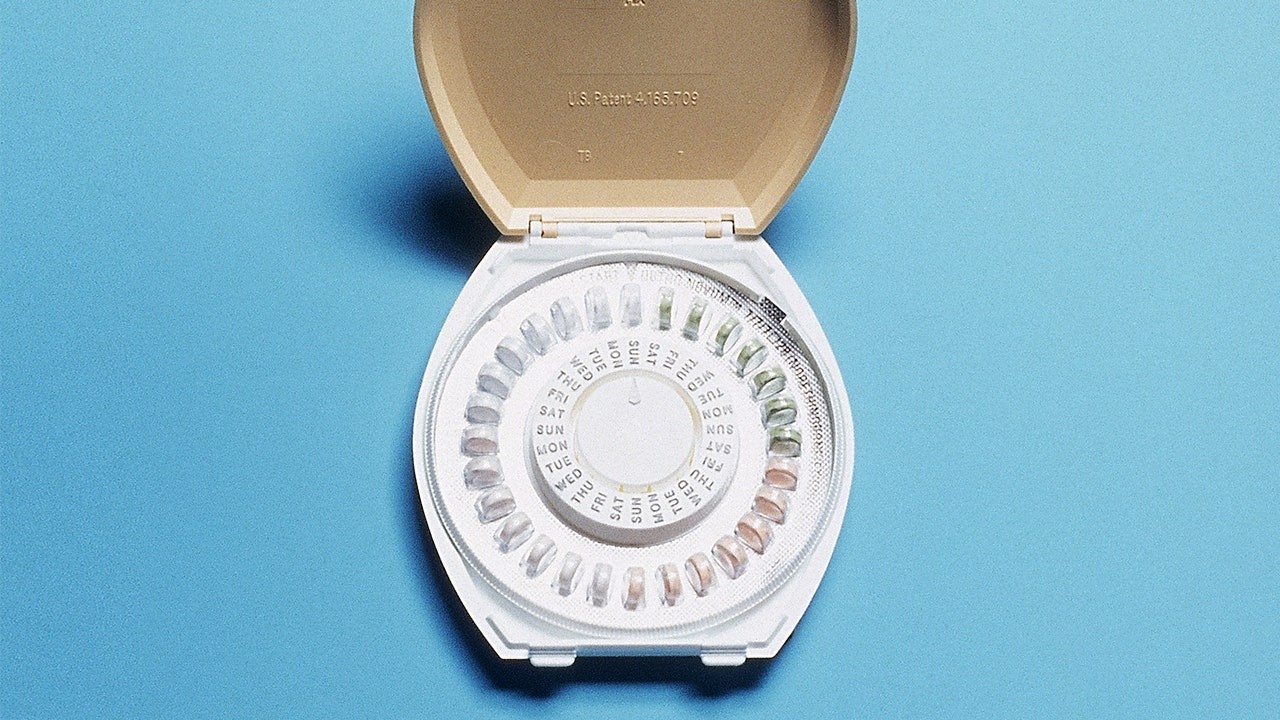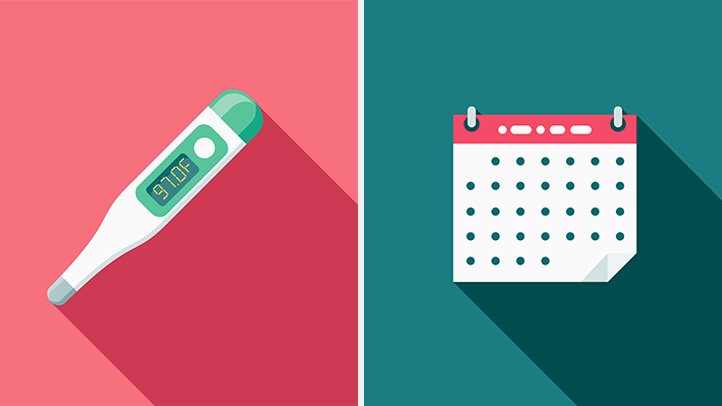Ditch Hormonal Birth Control & Reap the Benefits
Jan 19, 2021
Hormonal birth control isn’t for everybody. While it can be extremely effective, there can be negative consequences with long-term use. Chances are if you’re reading this you’re concerned about those long-term negative consequences.
The downfalls of hormonal birth control include:
- heart attack
- stroke
- blood clots
- skin changes
- breast changes
- long-term cancer risk
- estrogen dominance
- hair loss
- effect on libido
And if you’re over 35 and/or a smoker you run the risks of:
- blood clots
- vein inflammation
- breast cancer
- migraines (sometimes with aura)
- high blood pressure
- heart problems
- diabetes
- liver disease
This doesn’t begin to cover the increased chances of depression, suicidal ideation, and mess of hormones this kind of birth control can create. So, what’s a woman to do? How can you protect your health while still being in control of whether you get pregnant or not? Luckily, the answer is easier than you think.
Why Non-Hormonal Rocks
Besides being safer for you, using non-hormonal methods of birth control means that you have a huge variety of options – many more to choose from than hormonal methods. Have a quick look at some of these methods before we go into greater detail on each:
- male condoms
- female condoms
- diaphragm
- cervical cap
- spermicide
- sponge
- intrauterine devices (IUD)
- vasectomy
- tubal ligation
- natural family planning (or fertility awareness)
- withdrawal
- herbal birth control
Using any of these options means you won’t suffer the side effects of hormonal birth control & you won’t alter the natural cycle of your body. Plus, if you have insurance that doesn’t cover hormonal birth control in the first place, one of these non-hormonal methods will have you ready for action. (And the majority are inexpensive to boot!) Finally, these methods of birth control are easily available for the most part and the majority don’t require a prescription of any kind. Essentially this is a win-win all around for you and your body!

12 Non-Hormonal Birth Control Methods That Will Have You Covered
Let’s take a closer look at each one of these methods so you can decide which one (or more than one because they can be used in conjunction with each other) is best for you!
- Male Condoms: These are obviously the most popular form of non-hormonal birth control and the most readily available. Male condoms come in a variety of colors, textures, and materials, and are incredibly inexpensive. Often you can even get them for free at health clinics, etc. The most common material is latex (although if you or your partner are allergic to latex other options are available!). Besides preventing unwanted pregnancy they also prevent STDs and STIs. Used correctly they are 98% effective but with typical use they are 85% effective. To be effective you must use them each and every time you have sex. The downsides to male condoms include running the risk that you might not have one handy when a situation arises, possible need for extra lubrication during sex, possible change of sensation during sex, risk of being allergic to condom materials.
- Female Condoms: These provide the same benefits as their male counterparts, however, they are slightly harder to find and a bit more expensive. They can also be used by people allergic to latex. Used correctly they are 95% effective but with typical use they are 79% effective. Female condoms can also be a bit tricky to insert correctly at first, so it’s best to practice before actually using one for protection during sex.
- Diaphragm: A diaphragm is a small flexible cup made of silicone that closely resembles a menstrual cup. This non-hormonal birth control method does require a prescription, but it is effective immediately and can be used for up to two years. It covers the cervix during sex and blocks the transfer of sperm. You can leave it in for up to 24 hours, but you should wait 6 hours after sex to remove it. The diaphragm is 94% effective with correct use and 88% effective with typical use. Correct usage of the diaphragm involves pairing it with spermicide. It does not protect against STDs or STIs and cannot be used during your period.
- Cervical Cap: This method is just like the diaphragm except that it’s smaller. It also requires a prescription, can be used up to 2 years, and should be used with spermicide. The effectiveness rate of the cervical cap ranges from 60%-80%.
- Spermicide: This non-hormonal birth control is exactly what it sounds like – a chemical that kills sperm. Spermicide comes in lubricants, gels, or foams and works two ways: A) coating the cervix & blocking sperm or B) slowing, stopping, or killing sperm before it reaches the egg. Used by itself spermicide has an 82% effective rate with perfect use but a 72% effective rate with typical use. However, spermicide is really meant to be used in conjunction with a barrier method of birth control (aka condoms or diaphragms) which increases its effectiveness greatly. While easy to use, inexpensive, and prescription-free this method of non-hormonal birth control does come with a serious downside. Because spermicide is a chemical it may cause skin irritation around the genitals which increases your risks of genital lesions and HIV.
- Sponge: The contraceptive sponge is made of squishy plastic foam and contains spermicide, making it a combination of the above methods. It is inserted into the vagina prior to sex to create a barrier over the cervix while the spermicide kills any sperm that comes into contact with it. In women who have never been pregnant, it is 91% effective with perfect use and 88% with typical use. In women who have given birth before, it is less effective at 80% with perfect use and 76% with typical use. While the sponge may stay in for up to 24 hours, it should not stay in any longer. While rare, the sponge carries with it the risk of Toxic Shock Syndrome (TSS) most often associated with tampons. The sponge may also increase your risk of yeast infections and vaginal dryness.
- Intrauterine Devices (IUD): The non-hormonal IUD contains copper and may possibly be the best option out of all of these listed. With this method of birth control you don’t have to worry about taking a daily pill, you don’t have to worry about making sure you have supplies like a diaphragm on hand every time you have sex, and it’s reversible at any time should you decide you’re ready to have children. And this method of non-hormonal birth control is >99% effective at preventing unwanted pregnancy! Plus, the side effects are minor and typically involve cramping, heavy bleeding during periods, and spotting between periods (though these tend to wane over time). The only other concern with this method involves the copper. This IUD alone wouldn’t put you at risk for copper toxicity but if you are already around a lot of copper a lot of the time your risk would rise. Then you could be looking at fatigue, super heavy periods, digestion problems, and excess estrogen. Again, this is a minuscule risk and only really probable if you spend a large amount of time around excess amounts of copper for some reason. Overall though, this method of birth control could be your best bet.
- Vasectomy: If you’re looking for a permanent birth control solution, this is one option. A vasectomy is a sterilization method for males that involves cutting the tubes in the scrotum that sperm go through as they travel to exit the body. It is a fairly quick procedure and does not in any way change the physical quality of semen or the ability to ejaculate. It simply removes sperm from the equation. The effectiveness rate of this method of birth control is essentially 100% after a 3 month period (sperm can remain in the semen for up to 3 months). There is a minuscule chance the tubes may grow back together and reverse the procedure, but this is incredibly rare. Side effects are the same as they would be with any other surgery (pain, swelling, etc). Since it’s permanent, this is definitely an option to think long and hard about.
- Tubal Ligation: This is, of course, the female equivalent of sterilization. If for some reason your partner isn’t able or is unwilling to get a vasectomy, this permanent method may be an option. This procedure blocks the path of the egg as it travels through the fallopian tubes and can be done in a variety of ways including: A) damaging a small section of the fallopian tubes, B) inserting a coil into each tube, C) clamping off the tubes with clips. Unlike a vasectomy, a tubal ligation is effective immediately. It is also 99% effective in the 1st year and 100% effective thereafter (it is within the 1st year that the fallopian tubes are most likely to fuse back together, reversing the procedure). Risks include normal surgery risks, ectopic pregnancy (when an embryo implants somewhere outside the uterus), and possible hormone disruption. As with a vasectomy, think long and hard about whether this method is right for you.
- Natural Family Planning (Fertility Awareness): Also known as the “rhythm method”, this birth control method involves working closely with your body, being aware of your body’s changes as you go through your menstrual cycle, and predicting ovulation via these changes. We’re not going to lie – this method is a lot of work and it’s only about 75% effective for most women. But if you’re looking to ditch the hormonal birth control and are a stickler for details, this could be the method for you. There are different ways to go about this method, but it works best if you use some of these together, rather than separately.

- Keep track of your menstrual cycle with a calendar. Using this method, you simply count days to predict when you’re ovulating and need to avoid sex/use extra protection when having sex. Ovulation takes place approximately 2 weeks before the start of your next period. The problem with this method is that your cycle may not always be like clockwork. Face it, your period has a mind of its own and sometimes it just shows up whenever it likes.
- Measure your basal body temperature. Basal body temperature is the lowest body temperature attained during rest and right before ovulation your BBT usually increases by 0.5-1 degree. This method involves charting your BBT with a specialized thermometer several times a day, so you know when you hit that spot. Of course, a fever or chronic condition of some kind could throw your numbers off.
- Check out your cervical mucus. Definitely not for the squeamish, this method involves you getting intimately familiar with look, feel, and amount of cervical mucus you produce throughout the month. The quantity and texture of your cervical mucus changes around the time of ovulation to become thicker and more slippery.
The downsides here are the amount of work it takes to track all these things and chart them throughout the month, the fact that sperm can live inside the body for days so really you need to add extra days before and after ovulation, your partner can’t help you with this method of birth control, and there is a serious learning curve here – this takes practice. On the plus side, you’ll get to know your body better than ever and you’ll find that there are certain things a woman is better at on certain days of her cycle than others so you can, say, schedule a phone call or meeting on one of the days you’re feeling more confident (yes, seriously).
11. Withdrawal: The oldest form of birth control, withdrawal, is also the method that is least effective with only a 78% efficiency rate. While certainly inexpensive, this method is also the simplest to mess up. It’s common for men to misjudge when they should withdraw or get so wrapped up in what they’re doing that it slips their mind. And even if the method is remembered perfectly each and every time, there’s always a chance that some sperm may have slipped out pre-withdrawal which could result in pregnancy. We recommend this one mostly in a pinch when there are no other options available.
12. Herbal Birth Control: This method of birth control hasn’t been well researched, so we’d recommend it in conjunction with another form, such as a barrier method, if it’s something you want to try. There are several cultures around the world, however, who use herbs as birth control, including wild carrot seed and smartweed. You might know wild carrot seed better as Queen Anne’s Lace, but many societies know it as a type of “morning-after pill”. Taking a teaspoon of this right after intercourse, then every day for a week is supposed to prevent pregnancy. Before giving this a try, we highly recommend talking to an herbalist or naturopath to get proper dosing amounts and exact times to take. Plus, wild carrot seed looks a lot like hemlock – which is deadly – so it’s an incredibly bad idea to go off by yourself looking for it in the wild. As for smartweed, some societies use a large quantity of smartweed tea daily to prevent pregnancy. Traditions vary, and as with wild carrot seed, it’s not widely researched… so again, you’ll want to work with an herbalist or naturopath to make sure you’re using it correctly.
The Final Verdict
In the long run, only you can choose the birth control method that is right for you. We hope that you will consider a method that is low or hormone-free, so as not to mess with your body, your hormones and your natural chemistry. If you have already been using a hormonal birth control method and feel as if your hormones are already whacky, I’d love to help you with that. Let’s chat so I can help you identify what’s going on with your hormones and get you back to feeling happy, healthy, and normal in no time! And no matter which birth control method you choose, we hope you enjoy fun, happy, consensual, safe sex always – you totally deserve it!


